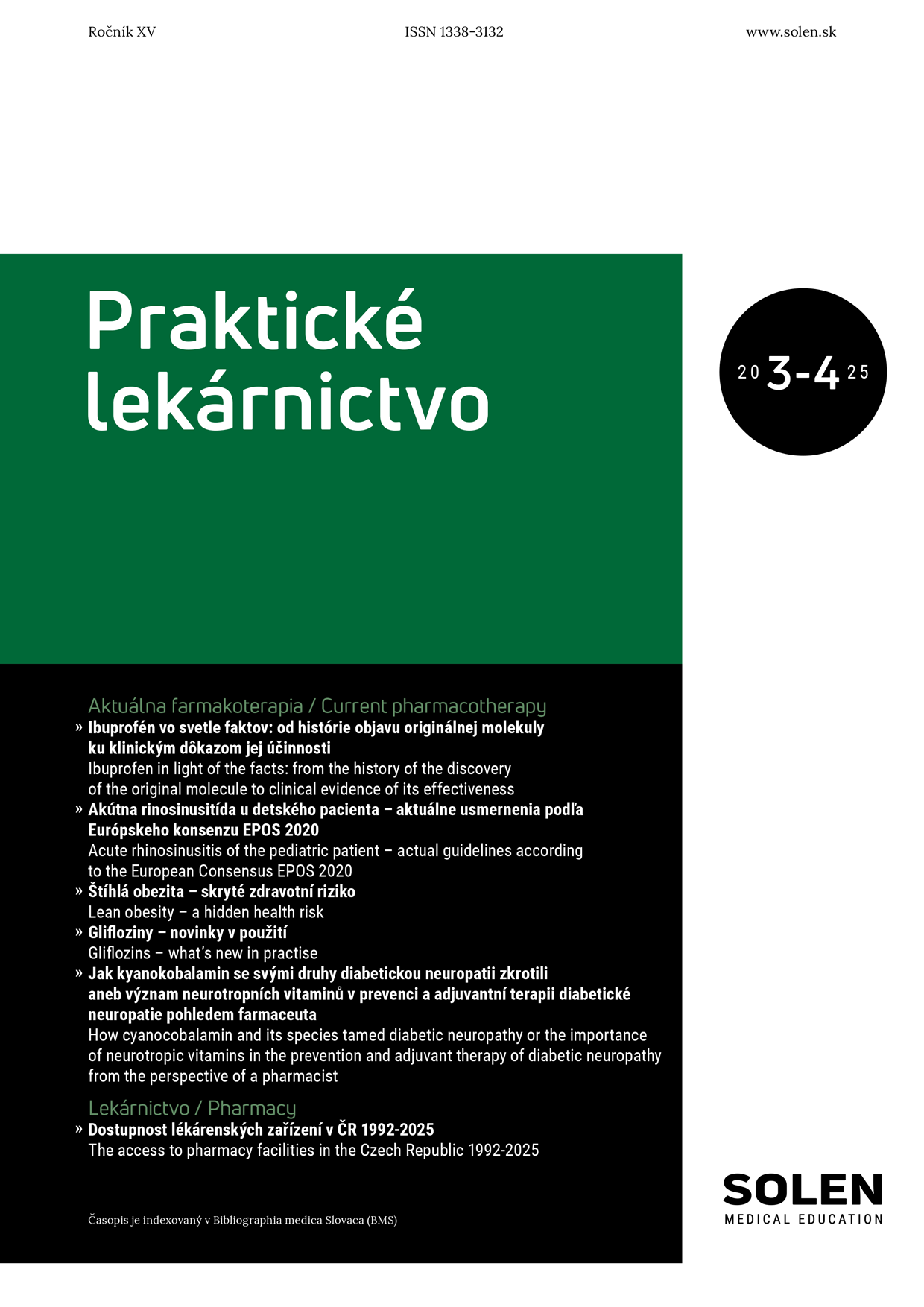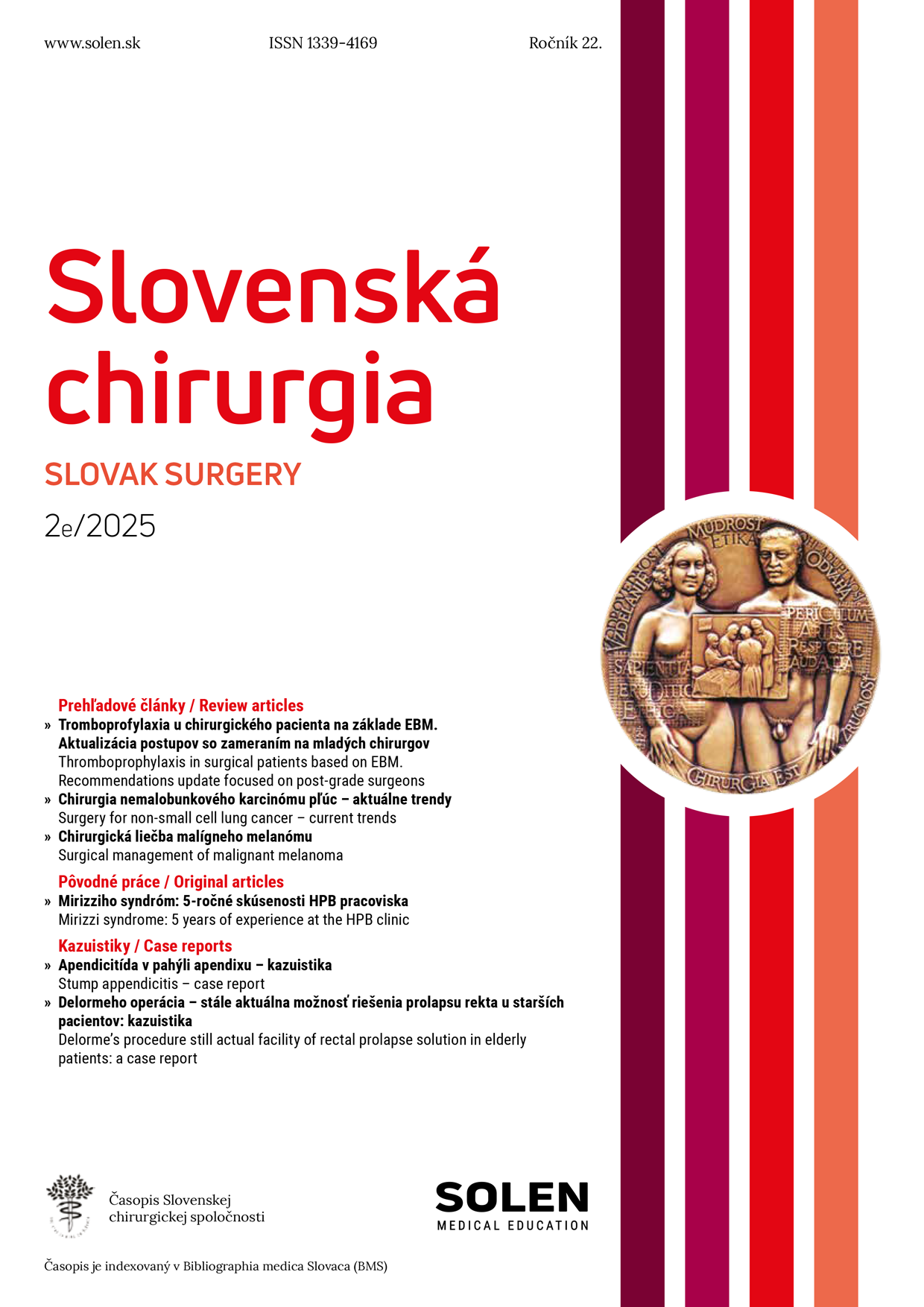Slovenská chirurgia 3/2023
Biopsia keloidnej jazvy?
MUDr. Martina Vidová Uğurbaş, PhD., MPH, MUDr. Katarína Vozárová, MUDr. Vladimír Pastva
Keloidná jazva je výsledkom neregulovateľnej poruchy bunkových procesov vo fáze hojenia rany. Medzi faktory podporujúce rast keloidov patrí infekcia, prítomnosť cudzieho materiálu v rane, napätie, neprimeraná tenzia z hĺbky v oblasti sutúry. Možnosťou liečby je injekčná aplikácia kortikosteroidov priamo do keloidnej jazvy, kortikoidné masti, silikónové náplasti a chirurgická excízia keloidných jaziev. Najlepšou terapiou je prevencia vzniku keloidných jaziev. V článku je obsiahnutá kazuistika 80-ročnej pacientky, ktorá bola vyšetrená na ambulancii plastickej chirurgie pre rozsiahlu keloidnú jazvu na brušnej stene. Pacientka bola v minulosti hospitalizovaná na chirurgickej klinike, kde bola vykonaná resekcia rekta pre karcinóm. Pacientka bola opakovane ambulantne vyšetrovaná pre zväčšujúcu sa keloidnú jazvu po laparotómii. Pre nezlepšujúci sa stav bola odoslaná na odd. plastickej, rekonštrukčnej a estetickej chirurgie v Košiciach, kde bola ambulantne pacientke vykonaná biopsia z jazvy s výsledkom dermatofibrosarcoma protuberans. Dermatofibrosarcoma protuberans je nádor, ktorý bol pôvodne charakterizovaný ako keloidný fibrosarkóm. V skorých štádiách sa prejavuje ako pomaly rastúci, nebolestivý kožný plak. Ak sa nádory neliečia, môžu lokálne preniknúť hlbšie do fascie, svalov, periostu kostí a v pokročilých štádiách metastázujú do pľúc, mozgu, kostí, viscerálnych orgánov, lymfatických uzlín a mäkkých tkanív. Dôležitá je preto včasná diagnóza a správna liečba.
Kľúčové slová: hojenie jaziev, keloid, dermatofibrosarkóm
Keloid scar biopsy?
The keloid scar is the result of an unregulated disorder of cellular processes in the wound healing phase. Factors supporting the growth of keloids include infection, the presence of foreign material in the wound and tension. A treatment option is the injection of corticoids directly into the keloid scar, corticoid ointments, silicone patches and surgical excision of keloids. The best therapy is the prevention of keloid scars. The article contains the case report of an 80-year-old female patient. Who was examined for a large keloid scar on the abdominal wall. The patient was previously hospitalized at a surgical clinic, where a rectal resection for carcinoma was performed. The patient was repeatedly examined on an outpatient basis for a keloid scar after laparotomy. Due to her unimproving condition, she was sent to the Dept. of Plastic, Reconstructive and Aesthetic surgery in Košice, we performed biopsy from the scar lession with the result of dermatofibrosarcoma protuberans. Dermatofibrosarcoma protuberans is a tumor that was originally characterized as a ,,keloid fibrosarcoma”. In the early stages, it manifests as a slow-growing, painless, skin plaque. If the tumors are not treated, they can locally penetrate deeper into the fascia, muscles, bone periosteum, and in advanced stages they metastasize to the lungs, brain, bones, visceral organs, lymph nodes and soft tissues. The early diagnosis and proper treatment are therefore important.
Keywords: wound healing, keloid scar, dermatofibrosarcoma

















